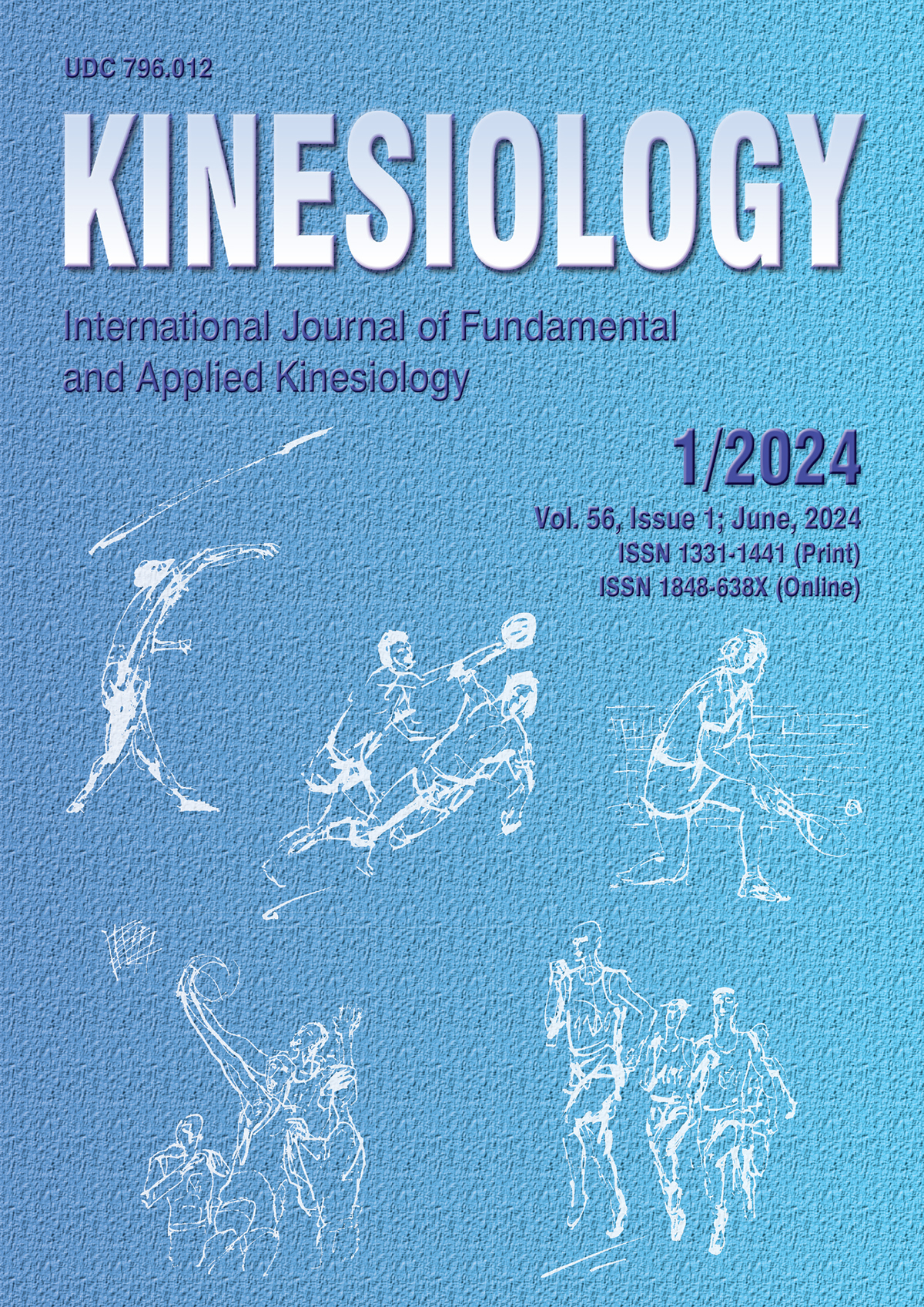DETERMINANT FACTORS OF ATTACK EFFICACY IN HIGH-LEVEL MEN’S VOLLEYBALL: WHAT DOES DISTINGUISH THE MIDDLE-ATTACKER PERFORMANCE?
Abstract
This study aimed to identify determinant factors of attack efficacy considering the effects of reception, attack tempo, attack performance, setting type and attack type. Firstly, 19,454 offensive actions of complex I of the Brazilian Volleyball Men’s Super League were considered and analyzed separately from the middle, wing, and opposite attacker standpoints. The middle attack was the most effective, so the 5,259 offensive actions were analyzed considering the setting type and the attack direction. The independent variables were the quality of reception, type and direction of attack, whereas attack performance was the dependent variable. We found that the middle attack efficacy was related to excellent receptions, right tempo and left tempo (near the setter), and power attack. The results can afford coaches with the key information for better training plan designs and preparation for competition.
Key words: factors in sport performance, tactics, performance, attack efficacy
Downloads
Published
How to Cite
Issue
Section
License

This work is licensed under a Creative Commons Attribution-NonCommercial 4.0 International License.
At Faculty of Kinesiology we recognize that access to quality research is vital to the scientific community and beyond. Kinesiology is non-profit journal and all costs of publishing and peer review process are covered by the publisher itself or other funding sources like Ministry of Science and Education of the Republic of Croatia. Full text papers are also available free of charge at http://hrcak.srce.hr/kineziologija. There are no restrictions on self archiving of any form of paper (preprint, postprint and publisher's version).
Articles are distributed under the terms of the CC BY - NC 4.0
Kinesiology does not charge any fees to authors to submit or publish articles in our journal.


